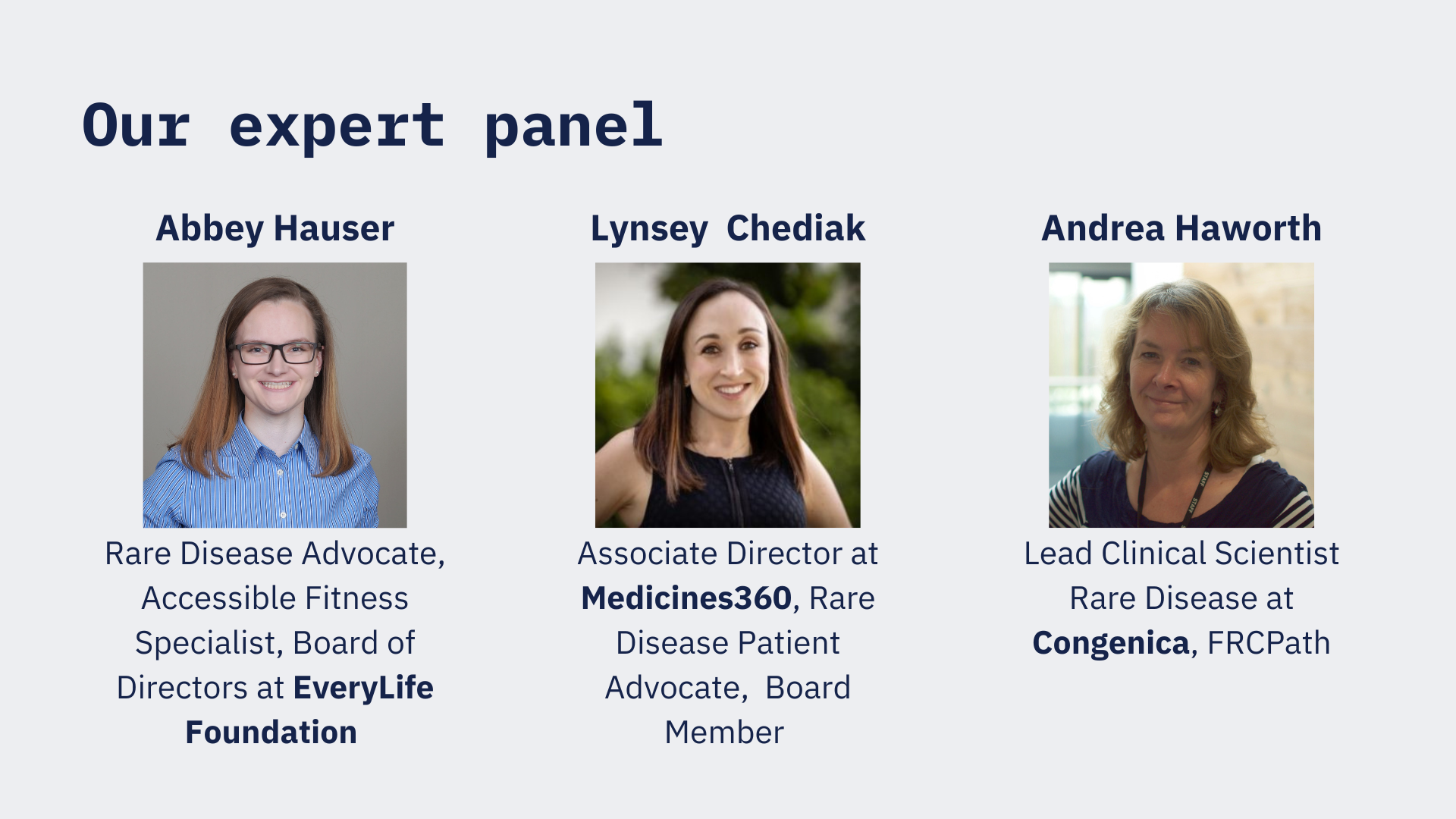The cost of rare disease is high, much higher than many other diseases, yet the support available for patients, particularly as they make the transition into adulthood, is often very low.
During this webinar, our panel of patient, industry and genomics experts explored this important topic and discussed the actual costs, both physical and emotional, of rare diseases. Together they explored the impact of a diagnosis and what's needed to help healthcare providers, patients and their families with the financial and emotional cost of rare disease.

Please complete the form below to view the on-demand webinar
Discover the true cost of rare disease
The cost of rare disease is high, much higher than many other diseases, yet the support available for patients, particularly as they make the transition into adulthood, is low. In the United States, the EveryLife Foundation found that the annual direct medical and indirect costs for 15.5 million people living with rare diseases was almost $1Tn.
Whilst the cost impact of common diseases is well documented and understandably a focus for many healthcare systems, the cost of rare diseases is less well recognised and disproportionately high. Using diabetes as an example, the EveryLife foundation report that the direct medical costs and lost productivity cost of the 24.7 million Americans with diagnosed diabetes was approximately 1/3rd that of the economic burden of 15.5 million people living with a rare disease.
One of the first big challenges for people with a rare disease is getting an accurate diagnosis.
While many live for years with an undiagnosed condition, some may never receive a diagnosis. A 2009 survey of eight common rare diseases in Europe showed that 25% of patients waited anywhere between 5 to 30 years for a diagnosis, but during that time only 60% of patients received a correct result. Given that~ 85% of all rare diseases have an underlying genetic aetiology, the recent advances in DNA sequencing and decrease in sequencing costs offer hope for more rapid and accurate diagnoses.
A diagnosis allows patients and their families to plan. Most rare diseases do not have a cure so a plan is needed to cover a lifetime of treatments, care and ongoing support: what is needed now, what might be needed in the future, who is going to provide it and how is it going to be paid for.
The entire process depends on the specific rare disease, where you are in the world, access to appropriate clinicians, your personal circumstances and an awful lot of luck. This is, as our panel of experts will discuss, simply not acceptable and they will look at potential solutions to these global challenges.



